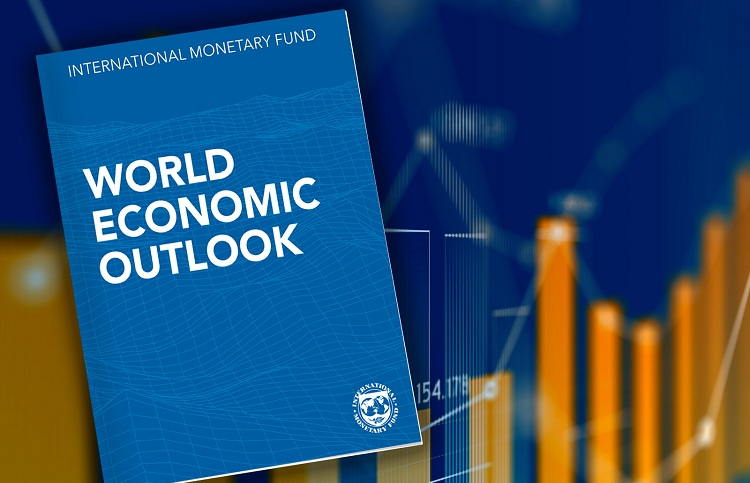International organizations forecast optimistically for Australia, and what we need is to maintain mindfulness and confidence.
According to the International Monetary Fund (IMF), the global economy is experiencing the most severe recession since the Great Depression of the 1930s, and it is expected that the Australian economy will also contract significantly this year.
However, the IMF’s “World Economic Outlook” also points out that Australia’s GDP in 2020 will be better than feared two months ago. Previously, the IMF predicted a 6.7% contraction in Australia’s actual GDP for April, but the latest report is slightly more optimistic, projecting a 4.5% contraction in Australia’s actual GDP this year.
The “World Economic Outlook” also makes predictions for next year. It is expected that the Australian economy will rebound significantly in 2021, with a growth rate of 4%.
However, now is not the time to relax. The Australian economy, government, and people need to proceed cautiously, treading on thin ice.
The Grattan Institute points out that the biggest mistake Australia could make is to assume that the economy has returned to track simply because the pandemic is under control. Previously, due to calculation errors, the federal treasury budgeted $60 billion more for JobKeeper than the actual claims. This was a fortunate mistake, but it could have been disastrous if the opposite had occurred. The current consensus in the political and economic circles is to continue spending this “windfall” budget on economic stimulus to prevent a second economic downturn later this year.
The Grattan Institute’s report suggests that wage subsidies should be provided to struggling businesses until the end of this year, and the eligibility criteria for receiving subsidies should be expanded. For businesses that were already struggling before the pandemic, bankruptcy due to pandemic-related reasons would have a significant negative impact on the national economy, as rebuilding factors such as productivity, technological methods, trained employees, and long-term supply-demand relationships cannot be achieved overnight. However, for businesses that were already struggling before the pandemic, the pandemic only acted as a catalyst for their demise.
The situation in the job market is equally critical. Professor Meijun Qian from the Australian National University’s Research School of Finance, Actuarial Studies & Statistics suggests considering short-term and medium-to-long-term employment issues and formulating corresponding measures.
In the short term, the unemployment rate may continue to rise. Many businesses and universities are still undergoing adjustments, and the increase in unemployment caused by the pandemic and economic impact has not been fully reflected yet. In the medium to long term, the unemployment rate is related to the policies implemented by the government. Professor Qian says, “Based on the current policies and future development, the unemployment rate may remain at a relatively high level for a long time.”
Yesterday, Prime Minister Morrison announced that the Treasury will submit a small-scale budget update report next Thursday, July 23, revealing the government’s fiscal support plan after September (when JobKeeper expires), including a comprehensive plan for industries such as tourism and education.
The Prime Minister explained that this plan will be targeted primarily at the industries and businesses most severely affected nationwide, and based on the current situation in Victoria, it is expected to provide more assistance to businesses in Victoria. In addition, the plan will focus on areas such as northern Queensland, the Gold Coast region, and other areas heavily impacted by the decline in international tourism.
Prime Minister Morrison also interpreted the employment data. He said that although Melbourne and its surrounding areas have entered a second round of lockdowns, the employment data released this week shows that as more people enter the labor market, the estimated effective unemployment rate will decrease from over 13% to 11.3%. In June, 210,000 job opportunities were added, the largest increase ever. However, due to a net increase in job seekers, the overall unemployment rate has risen. Additionally, most of the new positions are part-time rather than full-time.
The Prime Minister urged understanding, stating that he understands the eagerness of the Australian people to work longer hours to increase their income, but for now, it is necessary to remain patient, as having a part-time job is already good. The government welcomes businesses to split full-time positions into more part-time positions to support more employees. This may become an inevitable trend in the future.
Treasurer Frydenberg stated that the tourism industry, arts and leisure, hotels, and aviation are the industries currently in the greatest need of rescue. Yesterday afternoon, the Prime Minister announced on the Gold Coast that the government will allocate AUD 400 million to establish a seven-year comprehensive plan to stimulate the Australian film industry. This plan will help attract large film production teams to Australia for shooting and related activities. It is estimated that this funding alone will support 8,000 job positions annually.
(Image source: Gold Coast Bulletin)
Read More >>





